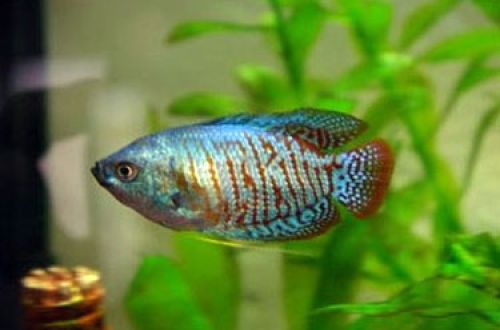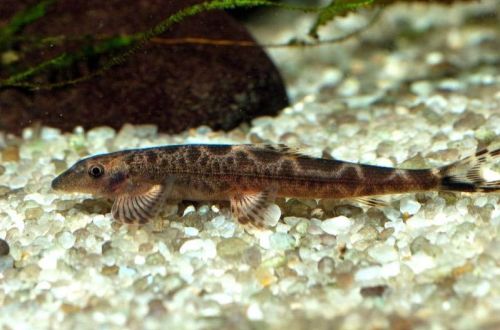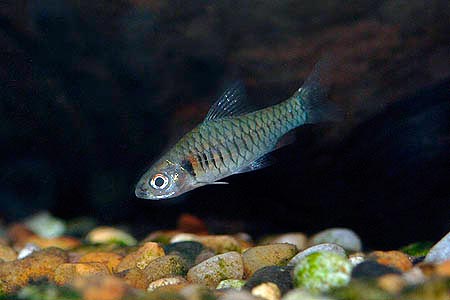
Barbus Congo
Barbus Congo, scientific name Clypeobarbus congicus, belongs to the Cyprinidae family. A rare guest in the home aquarium, because it is purposefully not available for sale. Sometimes found in pet stores with other related species in bulk supplies from commercial fish farms.

Despite the ease of maintenance and good compatibility with other fish, the low interest in this species is due to its unprepossessing coloration.
Contents
Habitat
By the name of the fish, it becomes clear that it comes from the African continent from the Congo River basin, which flows in the equatorial belt among dense tropical forests. The fish inhabits small tributaries and streams littered with fallen vegetation, branches, tree trunks, etc.
Brief information:
- The volume of the aquarium – from 80 liters.
- Temperature – 22-26°C
- Value pH — 6.0–7.0
- Water hardness – soft to hard (2-10 GH)
- Substrate type – any dark
- Lighting – subdued
- Brackish water – no
- Water movement is weak
- The size of the fish is 5–6 cm.
- Feeding – any food of suitable size
- Temperament – peaceful towards other species
- Keeping in a group of 8-10 individuals
Description
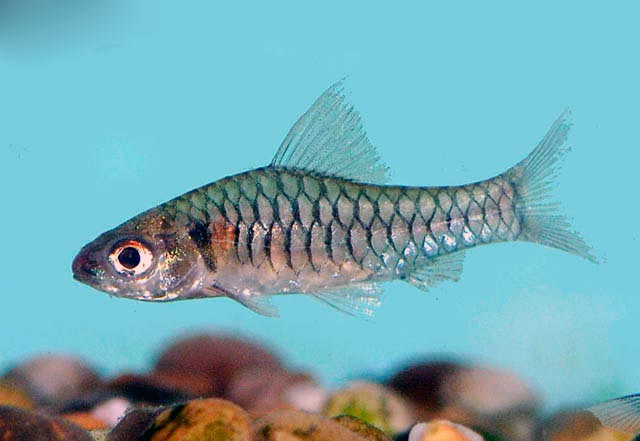
Adults reach a length of about 5-6 cm. Coloring may appear gray or silvery depending on the lighting. A characteristic feature in the body pattern is the dark edging of the scales. Fins are translucent. Sexual dimorphism is weakly expressed, males and females are almost indistinguishable.
Food
Not picky about the diet, accepts most popular foods (dry, live, frozen) of a suitable size. It can be quite content with exclusively dry food, so there should not be any difficulties with the choice of food.
Maintenance and care, arrangement of the aquarium
The optimal size of an aquarium for several fish starts at 80 liters. The design uses a dark substrate, thickets of plants, including floating ones, various snags and other shelters. The lighting is subdued. Additionally, you can use dry fallen leaves. Read more in the article “Which tree leaves can be used in an aquarium.”
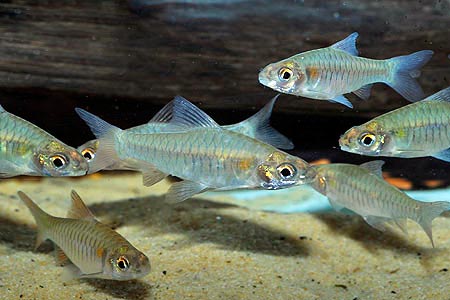
Successful management largely depends on maintaining stable water conditions with suitable water parameters. In addition to a productive filtration system, you will need to regularly clean the aquarium of organic waste, replace part of the water with fresh water, control the pH / GH / oxidizability values, and carry out equipment maintenance.
Behavior and Compatibility
Peaceful, mobile schooling fish, compatible with other non-aggressive species of comparable size, such as dwarf cichlids, small catfish, characins, etc.
Intraspecific relationships are built on the dominance of the alpha male over other males. Weaker fish will seek temporary shelter in shelters, so their presence is essential when keeping Congo Barbs. If they are absent or there is very little space in the aquarium, then the weakest males are likely to die. It is recommended to maintain a flock size of at least 8–10 individuals.
Breeding / reproduction
Due to the fact that this species is quite rare in amateur aquarism, reliable information about the successful case of its breeding has not been recorded. However, breeding should be similar to other Barbs.
Fish diseases
In a balanced aquarium ecosystem with species-specific conditions, diseases rarely occur. Diseases are caused by environmental degradation, contact with sick fish, and injuries. If this could not be avoided, then more about the symptoms and methods of treatment in the section “Diseases of aquarium fish”.
Source: FishBase



